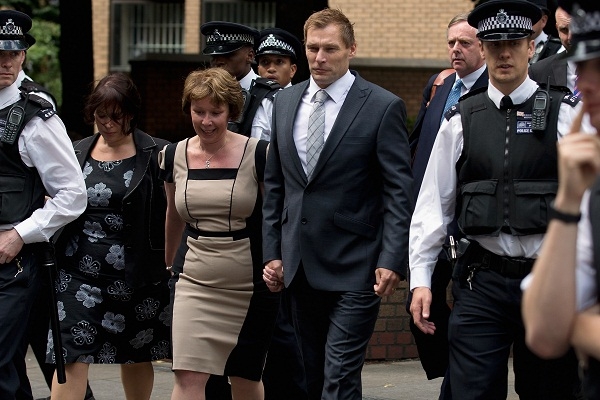The acquittal of PC Simon Harwood on Thursday for the manslaughter of Ian Tomlinson provoked a strong reaction in the press. Leading the charge, the Daily Mail’s headline summed up the mood: ‘Freed, the ‘thug in police uniform’: what jury weren’t told about the PC cleared of G20 killing.’ The criticism was aimed at not only Simon Harwood, but also the Metropolitan police for re-employing the officer with a string of complaints against him, and the court for not allowing evidence of his disciplinary record to go before the jury, the insinuation being that there must be something wrong with a trial process that keeps the jury in the dark about a defendant’s background.
The overall tenor of the coverage is that the jury got it wrong: had they known about the other complaints against PC Harwood, they would have convicted him. But this misses the point of jury trial. Jurors try a case based on the evidence put before them. Strict rules govern what is admissible, and in relation to evidence of a defendant’s ‘bad character’, those rules are contained in the wide-ranging contents Criminal Justice Act 2003. As a society, we trust the twelve men and women of a jury to represent us. They may not be like us professionally, personally or politically, but they act on our behalf as the defendant’s putative peers. The jury’s discussions are private, but we want them to pay attention, weigh the evidence, listen to judicial directions, and deliberate carefully. The fact that they deliberated for four days strongly indicates that the jury paid great attention to the evidence and discussed it thoroughly. Painful as it is for the family of Ian Tomlinson, we must respect their decision.
Further, the 2003 Act says that evidence of the defendant’s previous misconduct is subject to an ‘interests of justice’ test. A trial judge has to balance the prosecution’s desire to adduce that evidence against the prejudice it might have on the defendant. If the ‘bad character’ evidence is so bad, the risk is that a jury may be tempted to think that the defendant must have committed this offence irrespective of the evidence, simply because he’s committed a number of previous offences. Sometimes, it’s just too prejudicial to allow that evidence to be admitted into evidence.
Newspapers, of course, want sales. Cool reflection might be more helpful than daring headlines, since there is probably no need to change the law. In order for the system of trial by jury to maintain its legitimacy, it must first maintain its integrity. Arguably, that is what appears to have happened in the trial of Simon Harwood – uncomfortable as it may be for some, this case demonstrates that the system works, and that juries can be trusted.
John Mack is a London barrister specialising in crime. He tweets @JonDMack






Comments